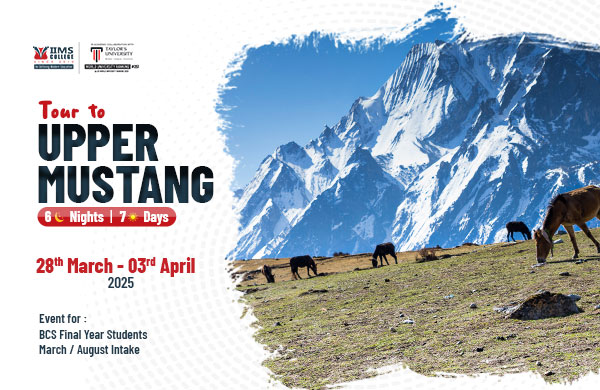July 12, 2025
Turboline X IIMS Hackathon 2025
At IIMS College, we are committed to shaping future-ready innovators by connecting education with real-world impact. That’s why we’re proud...

July 12, 2025
At IIMS College, we are committed to shaping future-ready innovators by connecting education with real-world impact. That’s why we’re proud...


Get ready for IIMS Ideathon 2025, where business meets technology! This dynamic event will bring together innovative minds to explore...
October 31, 2025


Gear up for an intense battle of creativity, coding, and innovation! The IIMS Hackathon is your chance to collaborate, solve...
September 23, 2025


Get ready for the most awaited event of the year, happening on Saturday, 26th July 2025 at the vibrant IIMS...
July 26, 2025


At IIMS College, we are committed to shaping future-ready innovators by connecting education with real-world impact. That’s why we’re proud...
July 12, 2025


Want to make a real difference in someone’s life? Join us at IIMS College for the Blood Donation Program 2025,...
June 13, 2025


At IIMS College, we understand that the transition after +2 can be both exciting and overwhelming. That’s why we’ve introduced...
June 12, 2025


This June 5, IIMS is joining hands with Changunarayan Municipality, Ward No. 2, The Federation of Community Forestry Users Nepal...
June 5, 2025


Get ready to crack codes, take the lead, and defend your way to victory in our upcoming Capture the Flag...
May 23, 2025


At IIMS College, we believe in supporting not just education but also the well-being of our community. We are hosting...
May 18, 2025


The AI Training Bootcamp is here to power up your skills. Led by Mr. Jatin Bhusal, this session is tailored...
May 7, 2025


Career Workshop, led by Ashrina Ranjit, will be held from April 23 to 25 at IIMS College. It aims to...
April 25, 2025


The 1-month C/C++ preparatory class for Bachelor of Computer Science (BCS) students from the September 2024 and January 2025 intakes...
April 23, 2025


Mark your calendars for 21st April 2025, starting at 7:30 AM at our college premises. We’re honored to host Prof....
April 21, 2025


The IIMS Convocation Ceremony 2025 for the Class of 2021 and 2022 is going to take place on Saturday, 5th...
April 5, 2025


The IIMS Career Workshop 2025 is a professional development event aimed at helping participants enhance their career skills. It offers...
April 1, 2025


Don't miss the opportunity to learn from top industry experts! Register now for the Hospitality Leadership Talk on 31st March...
March 31, 2025


Our BIHM students are organizing the Hospitality Showcase 2.0 on 30 MAR 2025 from 8:00 AM to 1:00 PM at...
March 30, 2025


We are excited to announce that our BCS Final Year students will embark on a 7-day adventure to Upper Mustang...
March 28, 2025


The Flower Arrangements Session, organized by IIMS College, will be held on March 28th. This session is designed for BIHM...
March 28, 2025


SANTA RANI PARIYAR and SABIN RAI & THE PHARAOH are set to perform at the highly anticipated IIMS Holi Bast...
March 12, 2025


March 7, 2025


Students will visit Thangpal Gaunpalika, Panchpokhari, Sindhupalchowk to explore real-life communities. 🏞️📖 They will talk to locals and learn about...
February 20, 2025


Exclusive Guest Session for BCS March 2022 Intake: Ideating Start-ups with Nikita Rajbhandari On 28th January 2025, the BCS March...
January 28, 2025


Hey BCS Aug '22 Students,Don’t miss out on a fantastic opportunity to learn from the best! Join us for a...
January 26, 2025